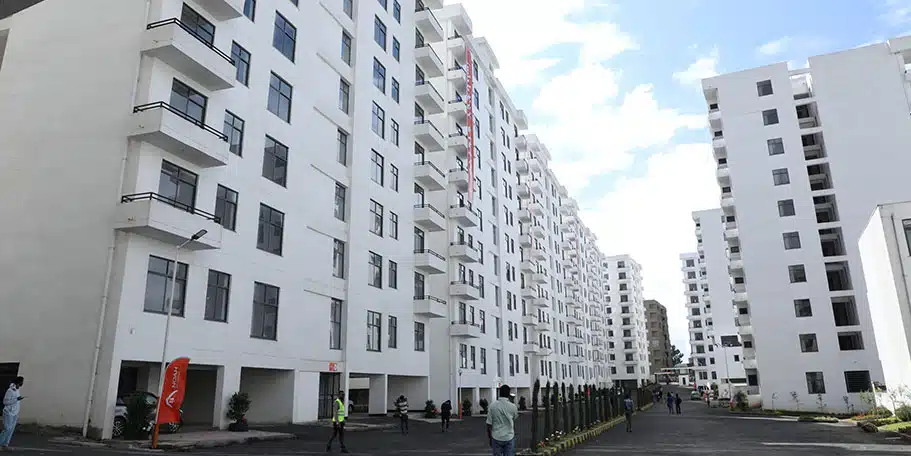
Only Syria and Cuba rank lower than Ethiopia on a recently published global index on income and property prices, highlighting the massive gap between income and housing costs in Addis Ababa and elsewhere.
According to Numbeo, a crowd-sourced online database that provides information on consumer prices, property prices, and quality of life metrics across the globe, Ethiopia’s property price-to-income ratio (PIR) is 47.1, indicating the average Ethiopian spends almost half of their income on housing.
Among yardsticks in the index, the price-to-income ratio is used to measure the relationship between housing prices and household income. It is calculated by dividing the median house price by the median household income. A higher PIR indicates that housing is less affordable, as prices are high relative to income. Conversely, a lower PIR suggests that homes are more affordable.
Property markets in Ethiopia and Cameroon, which has a PIR of 46.6, are far more expensive than elsewhere in Africa, according to Numbeo, which also featured South Africa (3.23), Egypt (18.19), and Algeria (16.74) on its index.
In Addis Ababa, which hosts a number of international and continental organizations such as the African Union and the United Nations Economic Commission for Africa, the City Administration is struggling in financing its public housing projects, managing to repay just 1.9 percent of 25.85 billion birr in bond credit due to the state-owned Commercial Bank of Ethiopia (CBE) over the first three quarters of the fiscal year.
– Advertisement –
Experts in housing development and real estate developers agree that lack of mortgage banking in Ethiopia is among the factors responsible for very low levels of housing availability in the country, while most real estate developers focus on availing luxurious housing to those who can afford to pay copious sums to own residential properties.
A substantial gap exists between the number of housing units needed and those actually available, particularly in Addis Ababa, with projections requiring a large increase in annual housing unit construction.
The housing sector is experiencing a mix of challenges and opportunities, including a significant gap between housing demand and supply, rising costs, and the impact of government initiatives. There is also a push for more regulated and transparent real estate practices, alongside efforts to address the existing housing shortage.
The market slowdown has also been observed by Ermias Amelga, a pioneer in Ethiopia’s real estate development scene. Despite stepping back from the sector as a result of a failed housing project and the controversies that followed two decades ago, Ermias maintains a keen interest in market trends.
In an unpublished interview with The Reporter Magazine a few months ago, he argued that Addis Ababa’s real estate market, after a period of rapid expansion, is now grappling with “multiple structural challenges.”
“High-end apartments and villas are flooding the market, but demand has slowed significantly, with developers who miscalculated demand now facing long sales cycles and price reductions to offload inventory,” Ermias said. “Speculative investors are offloading properties at discounted rates, putting downward pressure on prices, and this trend has led to a loss of confidence in the market, discouraging further speculative investment.”
Numbeo was founded in 2009 by Mladen Adamović to facilitate the sharing and comparison of such data. By 2017, it was recognized as the world’s largest database of user-generated information about cities.
.
.
.
#Ethiopia #Ranks #Bottom #Global #Housing #Affordability #Index
Source link











